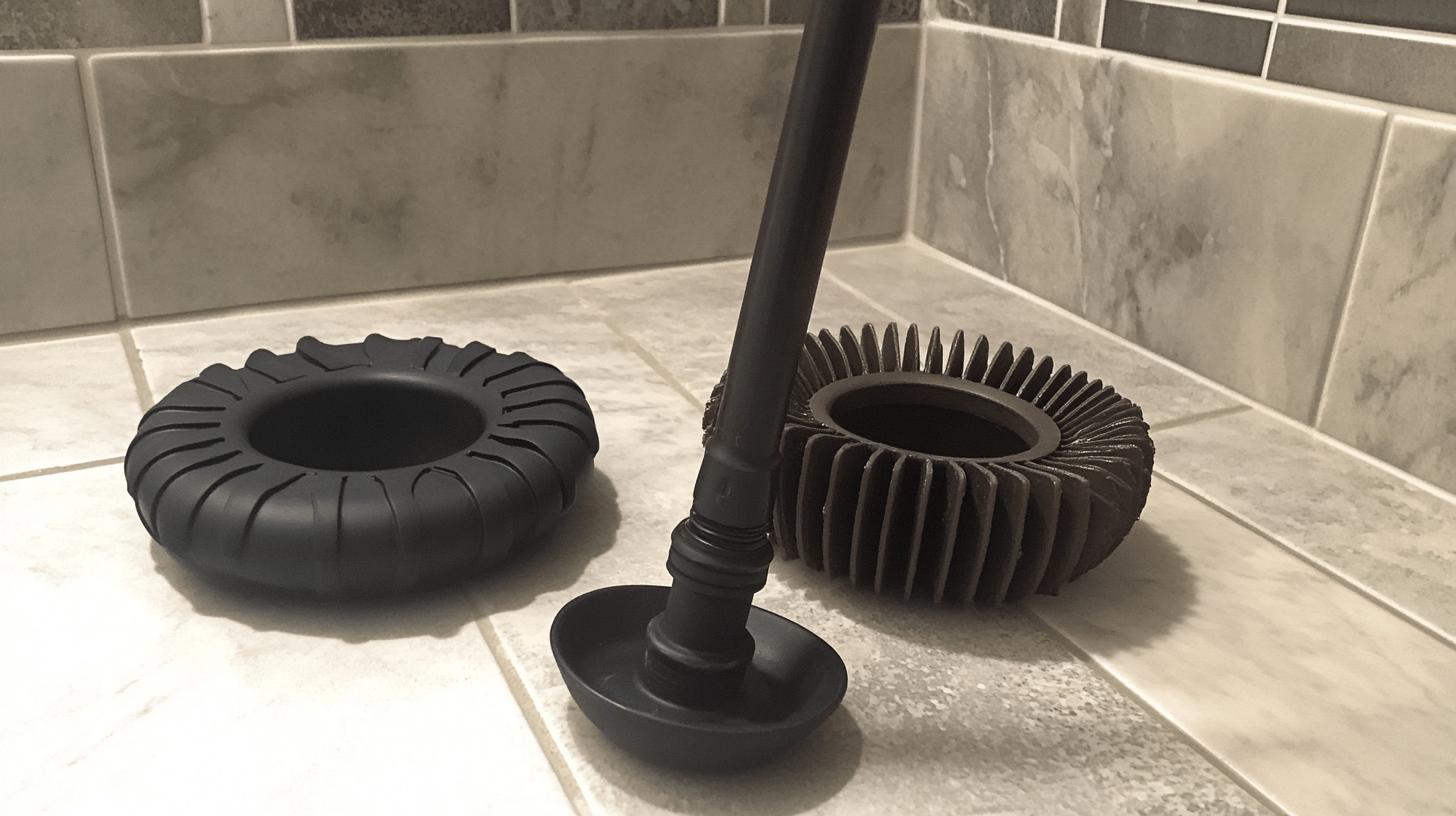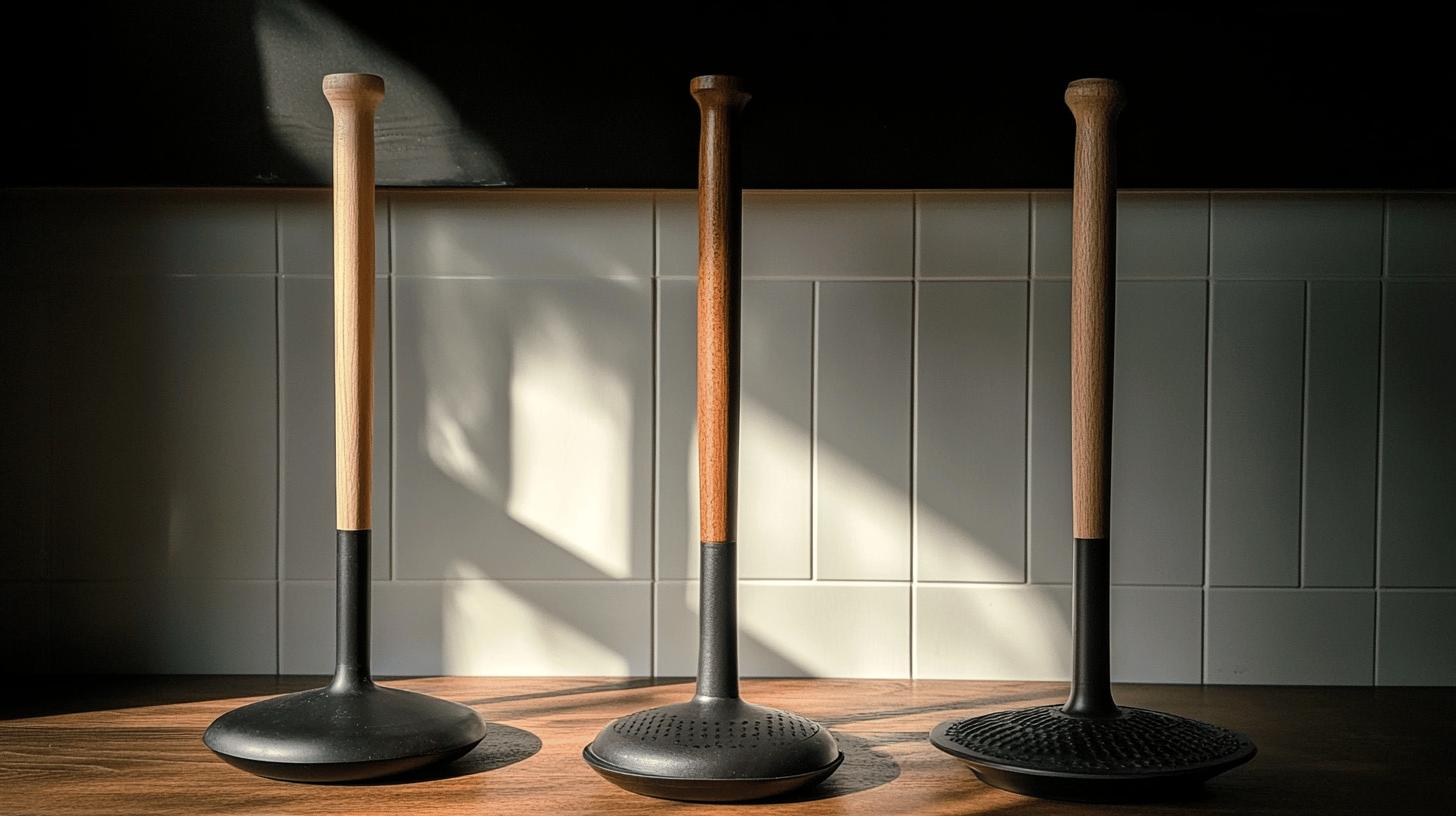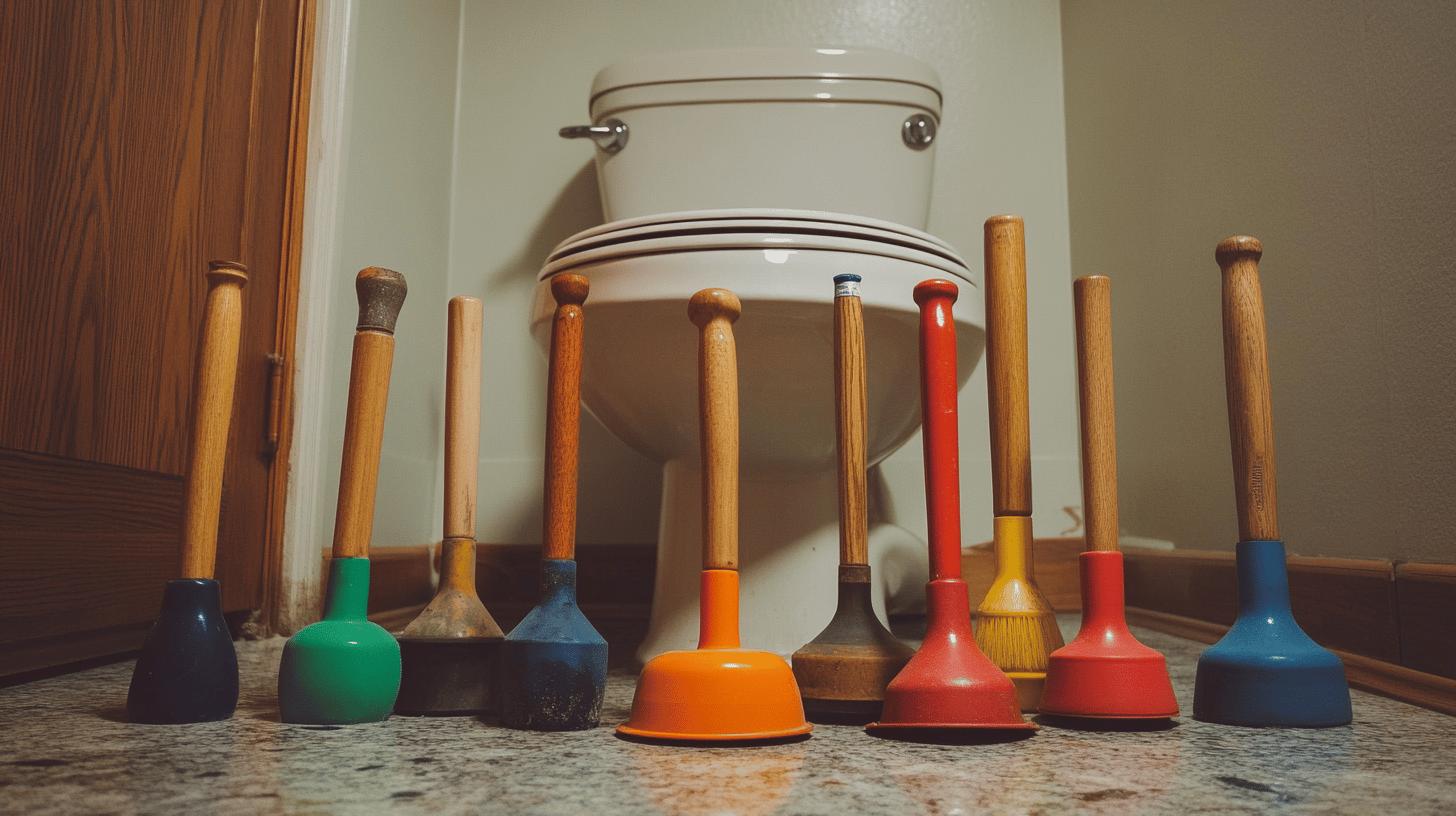TL;DR:
- Cup Plunger:
- Use: Sinks, bathtubs
- Features: Rubber cup, straight handle.
- Flange Plunger:
- Use: Toilets
- Features: Rubber flange for tight seal, best for modern toilets.
- Accordion Plunger:
- Use: Tough toilet clogs
- Features: Rigid accordion body enables strong pressure.
- Cleaning: Wash with soap and hot water, rinse, and let air dry.
- Storage: Keep in dry, ventilated space, away from sunlight.
- Maintenance: Inspect for cracks after use; replace damaged plungers.
Ever wonder why your plunger isn’t clearing that stubborn clog? It could be because you’re using the wrong type for the job. Not all plungers are created equal—each one is designed for a specific plumbing challenge. Whether you’re dealing with a sink, toilet, or bathtub, the right plunger can save you time and effort. Our guide breaks down the differences between cup, flange, and accordion plungers, helping you choose the best one for each situation. Let’s tackle your plumbing problems the right way!
Best Kind of Plunger: Top Picks Explained
Choosing the right plunger is key to handling clogs in your home efficiently. Different plungers are made for specific plumbing tasks, so picking the right one helps tackle issues quickly without hassle.
Cup plungers are the most common type. They have a rubber cup on a handle, perfect for sealing over flat surfaces like sinks and bathtubs. This design lets them dislodge clogs in shallow drains effectively. However, cup plungers aren’t suitable for toilets, which require a more specialized tool.
For toilets, flange plungers are ideal. They have a rubber flange that fits snugly into toilet drains. This creates a strong vacuum seal, which is essential for clearing blockages. Flange plungers work best with modern toilets, where a tight seal is crucial for effective suction.
Accordion plungers have an accordion-like body that generates more pressure. They’re great for stubborn toilet clogs needing extra force. Though they require more effort due to their rigid build, they’re invaluable for tough scenarios when other plungers might fail.
Plunger Types
- Cup Plunger
- Key Features: Simple rubber cup, straight handle
- Ideal Scenarios: Flat surfaces like sinks and bathtubs
- Flange Plunger
- Key Features: Rubber flange for toilet drain fit
- Ideal Scenarios: Toilet clogs, especially modern toilets
- Accordion Plunger
- Key Features: Rigid accordion body
- Ideal Scenarios: Tough toilet clogs needing strong pressure
Choosing the right plunger depends on your specific plumbing situation. Knowing the benefits of each can ensure you’re ready for any clogging emergency.
Comparing Plunger Effectiveness: Which Is Best for You?

Choosing the right plunger makes clearing clogs easier and faster. Flange plungers work best for toilets, thanks to their tight seal, while accordion plungers handle tough toilet blockages but need more effort. Cup plungers are versatile for sinks and bathtubs but aren’t effective for toilets. For deep blockages, plumbing snakes are better, but plungers excel at surface-level clogs.
Plunger Use Recommendations
- Flange Plunger
- Advantages: Tight seal in toilets, effective suction
- Disadvantages: Not versatile for flat surfaces
- Recommended Use: Toilet clogs
- Accordion Plunger
- Advantages: Strong pressure for stubborn blockages
- Disadvantages: Requires more effort, limited to toilets
- Recommended Use: Tough toilet blockages
- Cup Plunger
- Advantages: Versatile for sinks and flat drains
- Disadvantages: Less effective for toilets
- Recommended Use: Sinks, bathtubs, shallow clogs
Selecting the best plunger type depends on your plumbing needs and preferences.
How to Use Each Type of Plunger Effectively
Using a plunger the right way makes clearing clogs easier. Start by putting on gloves for safety, and make sure the area is wet to help the plunger seal better.
Using a Cup Plunger
To use a cup plunger, make sure it seals over the drain and is submerged in water. It’s great for flat surfaces like sinks. Once sealed, use quick, steady motions to clear the clog effectively.
Using a Flange Plunger
For toilet clogs, use a flange plunger. The rubber flange fits tightly into the drain, creating a strong seal. Place it over the drain, insert the flange, and use steady thrusts to clear the clog. A snug fit and firm pressure are key to getting the job done.
Using an Accordion Plunger
Accordion plungers are great for tough clogs. Place it over the drain to seal it, then push steadily. Its design builds strong air pressure to clear blockages. With practice, you’ll confidently handle any clog using the right plunger technique.
Choosing the Right Plunger for Your Home

Having the right plunger makes handling clogs easier and saves you money on plumber visits. Each type is designed for specific jobs: cup plungers work on sinks, flange plungers seal tightly in toilets, and accordion plungers handle tough clogs with extra force.
If clogs happen often, investing in a durable flange or accordion plunger is worth it. Choose one that’s easy to use and suits the type of drains in your home.
Expert Recommendations
| Plunger Type | Best For |
|——————|————————————|
| Cup Plunger | Sinks, bathtubs, flat surfaces |
| Flange Plunger | Toilet clogs, especially frequent |
| Accordion Plunger| Stubborn toilet blockages |
Understand your household needs to select the right plunger and be ready for any plumbing challenge.
Maintaining and Storing Your Plunger for Longevity
Keeping your plunger clean and in good shape ensures it works well and stays hygienic. Wash it with soap and hot water after use to remove dirt and bacteria, then let it air dry before storing it in a dry, ventilated spot.
Check your plunger regularly for cracks or worn rubber. A damaged plunger won’t seal properly, so replace it when it starts to wear out. Taking care of your plunger means it’ll be ready to tackle clogs when you need it.
Maintenance Tips
- Cleaning and Drying Steps:
- Wash with soap and hot water
- Rinse well
- Let air dry
- Storage Tips:
- Store in a dry, ventilated space
- Avoid sunlight to prevent rubber decay
Following these practices ensures your plunger remains dependable for any plumbing issue.
Final Words
Choosing the right plunger makes clearing clogs easier and less frustrating. Cup plungers are great for sinks, flange plungers are perfect for toilets, and accordion plungers handle tough blockages. Knowing how to use and maintain them keeps them effective and hygienic. Having the right plungers ready for your home ensures you’re prepared for any plumbing problem, saving time and effort.
FAQ
What is the most effective type of toilet plunger?
A: Flange plungers are the most effective for toilets. Their rubber flange fits snugly into the toilet drain, providing superior suction and pressure to clear clogs efficiently.
How do I choose the right plunger?
A: Choosing the right plunger depends on your needs. Consider where you’ll use it most: cup plungers for sinks, flange plungers for toilets, and accordion plungers for tough clogs.
Is an accordion plunger better?
A: Accordion plungers create strong pressure suitable for tough toilet clogs. They require more effort and are not as easy to use as flange plungers.
What is the most effective way to plunge a toilet?
A: The most effective way to plunge a toilet involves using a flange plunger. Ensure a snug fit in the drain, then use firm, rhythmic pumps to push and pull, creating pressure to dislodge the clog.

